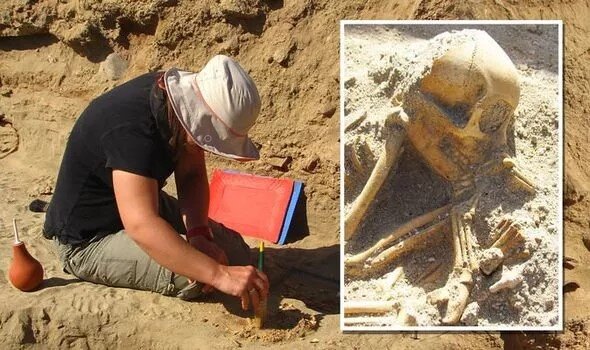Monkeys from India Identified in Roman Pet Cemetery in Africa
Polish archaeologists have discovered that ancient Romans and Egyptians imported monkeys from India as household pets.

Researchers found when examining monkeys buried in the animal cemetery in the Berenice Red Sea Port researchers found that the primates were rhesus macaques endemic to India, rather than some local species.
Archaeologists from the Warsaw University’s Centre of Mediterranean Archaeology were in the process of excavating a vast animal cemetery when they came across the monkey skeletons.

For years they assumed they belonged to guenon species, quite common in this area.
It was only by using 3D scanners and comparing the bones with others that they made the incredible discovery.
Professor Marta Osypińska, a zooarchaeologist from the Polish Academy of Sciences, said: “We believe that the influential Romans who lived in Berenice, a faraway outpost, in the first and second, wanted to make their time pleasant with the company of various animals. Among them were also monkeys.”

The pets were carefully buried in an animal necropolis and arranged like sleeping children.
Additionally, one of them was covered with a woolen fabric. The other had two large shells by their heads, including one coming from the Indian Ocean or south-eastern shores of Africa.
On both sides of the animal, there were amphora fragments. In one of them there was a piece of cloth, and in the second one – a skeleton of a very young piglet, and next to it three kittens.

Osypińska said: “This is a unique finding. Until now, no one has found Indian monkeys in the archaeological sites in Africa. Interestingly, even ancient written sources don’t mention this practice.”
The settlement in Berenice existed since the pharaonic times. In the third century BC, it was used as a harbour for transporting African elephants used in battle and a military outpost.
However, it was only after the Romans took over Egypt, that the port flourished. It became a centre of transoceanic trade between Egypt, the Middle East, and India.
Previous findings in the port confirmed the frequent trade contacts with the Indian subcontinent. Spice, textiles, and other luxury goods were among goods transported across the Indian Ocean.
The Polish archaeological mission revealed perfectly-preserved organic (skins, textiles from China and India, sails) and botanical materials: rice, sesame, lotus, irises, frankincense, myrrh, coconuts, teak wood, as well as an offering of eight kilograms of black pepper in Indian jars found near the Great Temple.
The transport of monkeys from thousands of kilometres away was not small, especially since it was done only for entertainment purposes.
Professor Osypińska said: “It involved providing the animals with adequate food and water during a few weeks’ cruise across the Indian Ocean and the Red Sea.
“Unfortunately, after reaching Berenice the monkeys couldn’t adapt and died young. It was probably caused by s lack of fresh fruit and other necessary nourishment.”
Archaeologists from the Warsaw University’s Centre of Mediterranean Archaeology, together with Americans from the University of Delaware have been working in Berenice since 2008, with cooperation from the Polish Academy of Sciences’ researchers.
During their work, the archaeologists uncovered the remains of monumental fortifications, defence walls, towers, and an enormous underground complex, as well as temples and the animal cemetery.
